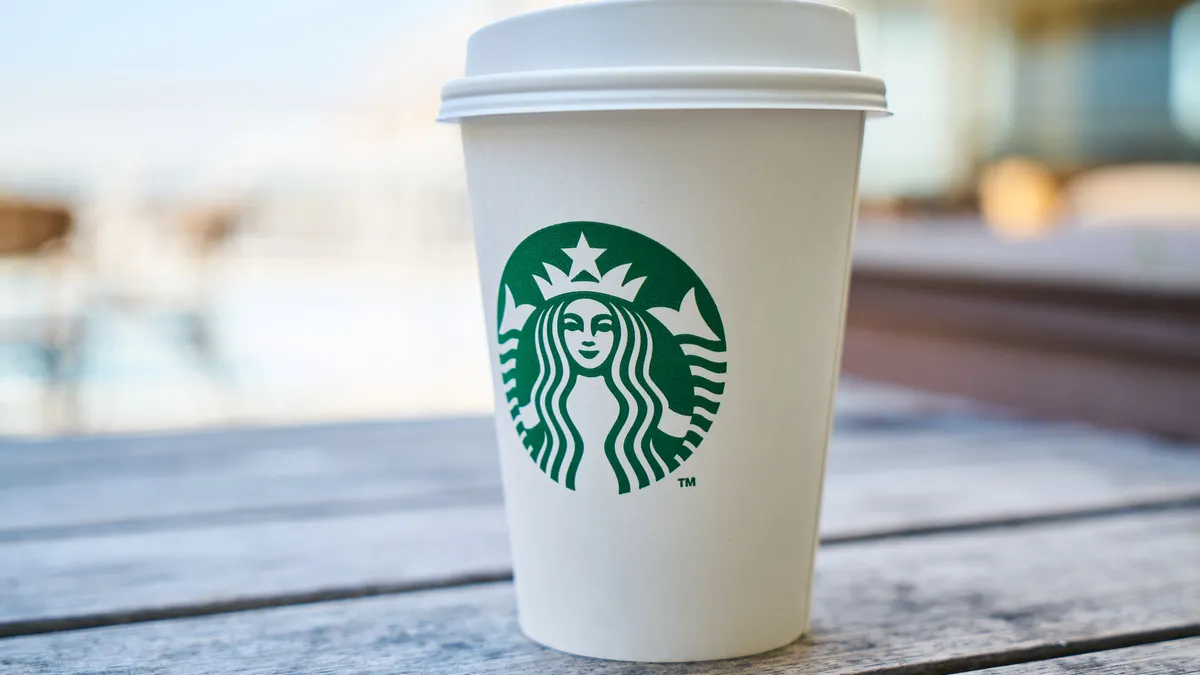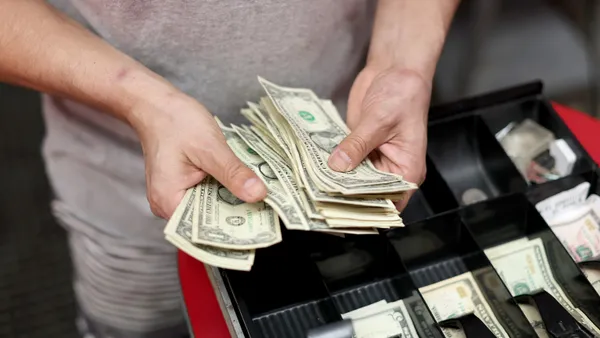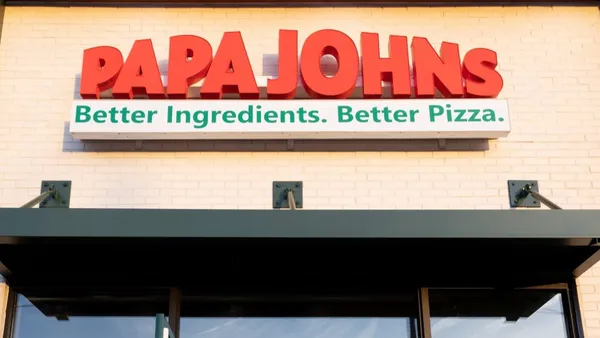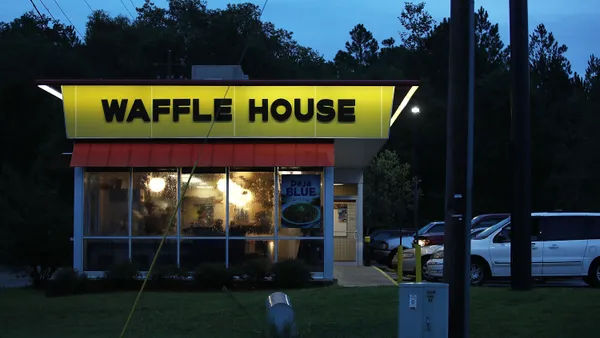Dive Brief:
- During an investor event this week, Starbucks said it plans to add about 22,000 new locations within the next 10 years — from its current 33,000-unit footprint to about 55,000 units. CNN reports this portfolio will include a variety of concepts, from smaller stores to those with drive-thru and pickup capabilities.
- COO Roz Brewer noted that there is room to expand in regions where the brand is less penetrated, as well as “high-volume, high-margin, suburban drive-thrus.” The company is also considering formats in metro locations that could reduce long lines, she said.
- This announcement comes just months after the company said it will close about 800 stores, including 400 in the U.S. During its most recent quarter, the company’s global same-store sales decreased 9%, an improvement from its Q3 in which same-store sales were down by 40%. The company has opened a net 1,404 new stores in 2020, of which 1,117 were international.
Dive Insight:
Starbucks may have struggled earlier in the pandemic, but locations with drive-thrus helped the company sustain itself through a challenging spring as dining room capacities were limited. During its Q4 call, Brewer said the company’s metro suburban areas and drive-thrus are faring well, and the company has previously announced its plans to accelerate expansion of drive-thru formats.
In fact, that recent Q4 performance exceeded analysts’ expectations, and such optimism is fueling the company’s growth, particularly in international markets. Starbucks plans to open 1,100 net new stores in fiscal year 2021 — a 3.4% increase in its current footprint. Of those, 1,050 are planned overseas, with 600 in China, which the company calls its “lead international growth market.” CFO Patrick Grismer has said the company’s long-term goal is to reach 6,000 stores in China by the end of 2022. The coffee chain currently operates in 83 markets and one-third of those stores are international.
China is a lead market for a reason. The country’s coffee consumption has grown by an average annual rate of 16% throughout the past decade.
The company is also bullish on its international segment’s recovery from the pandemic. During its Q4 earnings call, CEO Kevin Johnson said the company expects international same-store sales to grow up to 30% in 2021 as COVID-19 impacts dissipate in markets like China and Japan.
International Group President John Culver said there is also acceleration of concepts. In China, for example, the chain is rolling out Starbucks Now, which is similar to Starbucks Pickup in the U.S. and caters heavily to a digital customer. The Pickup model first debuted last year in New York City and allows customers to order in advance on their phones and pickup their orders without the wait.
Essentially, Starbucks is swapping out its underperforming models in underperforming markets to accelerate growth — all part of its “trade area transformation initiative.” The company said during its investor conference, for example, that 45% of its stores will eventually be drive-thru, from about 35% now, and more stores will also include drive-thru channels to push the company’s mobile business.
Demand for such a convenience-based model has increased during the pandemic as consumers have grown used to not being able to linger in a dining room. As such, several chains have readjusted their development plans to include mobile-and-drive-thru-centric models.
Starbucks still has its traditional and Roastery locations, however, creating as diverse a portfolio as it gets in the industry and catering to consumers’ demands for both experiential and convenience.
“We’re accelerating our innovation, particularly around trade area transformation, to reposition our stores for growth,” Brewer said on the Q4 call. “The new formats that you see coming to market, we’re planning for our future growth. We’re moving in that direction, just at a faster pace.”













